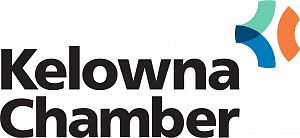Kelowna - Today’s provincial budget aligns the government’s fiscal plan with the policy areas they had already indicated are a priority, those being housing attainability and childcare but unfortunately it leaves the business community set to pick up a $1.92 billion tab on MSP by the fiscal year 2020.
Today’s budget announcements which intend to “stabilize the market and curb demand” with investments of more than $6 billion over 10 years are a welcome move that will help small business owners address another key challenge in BC’s tight labour market: recruiting and retaining staff. But while an increase in tax on foreign buyers and an increase in the property transfer tax are meant to cool speculation that is driving up housing costs, the Kelowna Chamber will want to monitor things closely to ensure those moves don’t lead to a decline in investment that would help increase the supply side of the housing market.
“Less encouraging,” says Tom Dyas, President of the Kelowna Chamber, “is the news that businesses will be footing the bill to the tune of almost $2 billion by 2020-21 to cover the full phase-out of MSP premiums. This new tax will have a negative effect on growth and investment.”
When taken in conjunction with the loss of revenue neutrality (and increase) of the Carbon Tax, and increases to minimum wage and the corporate tax rate, businesses of all sizes are facing the cumulative effect of crippling tax increases that will challenge their ability to invest and grow.
“Our members like to see balanced budgets,” says Dyas, “especially with capital investments in infrastructure, education, trade, and housing that support many businesses in the province through direct and indirect job creation, but this budget looks like it’s being balanced on the back of a strong economy and through accumulating tax increases on business.”
“Given the strength of our economy and the government’s emphasis on innovation and the emerging economy, we expected to see a strategy that would reduce red tape and help to spur growth. As an example, instead of simply increasing spending, it would have been good to see targeted financial incentives to drive innovation and early adoption of new technologies.”
A quick bottom line impact analysis of the “Employer Health Tax” on business:
|
Small Business Payroll |
Tax as % of Payroll |
Revenue hit to bottom line |
|
$750,000 |
0.98% |
$7,313 |
|
$1,000,000 |
1.46% |
$14,625 |
|
$2,500,000 |
1.95% |
$29,250 |

